AI Frontiers: Investment Insights into NVIDIA, AMD and Microsoft Post-Computex Showdown
June 4, 2024
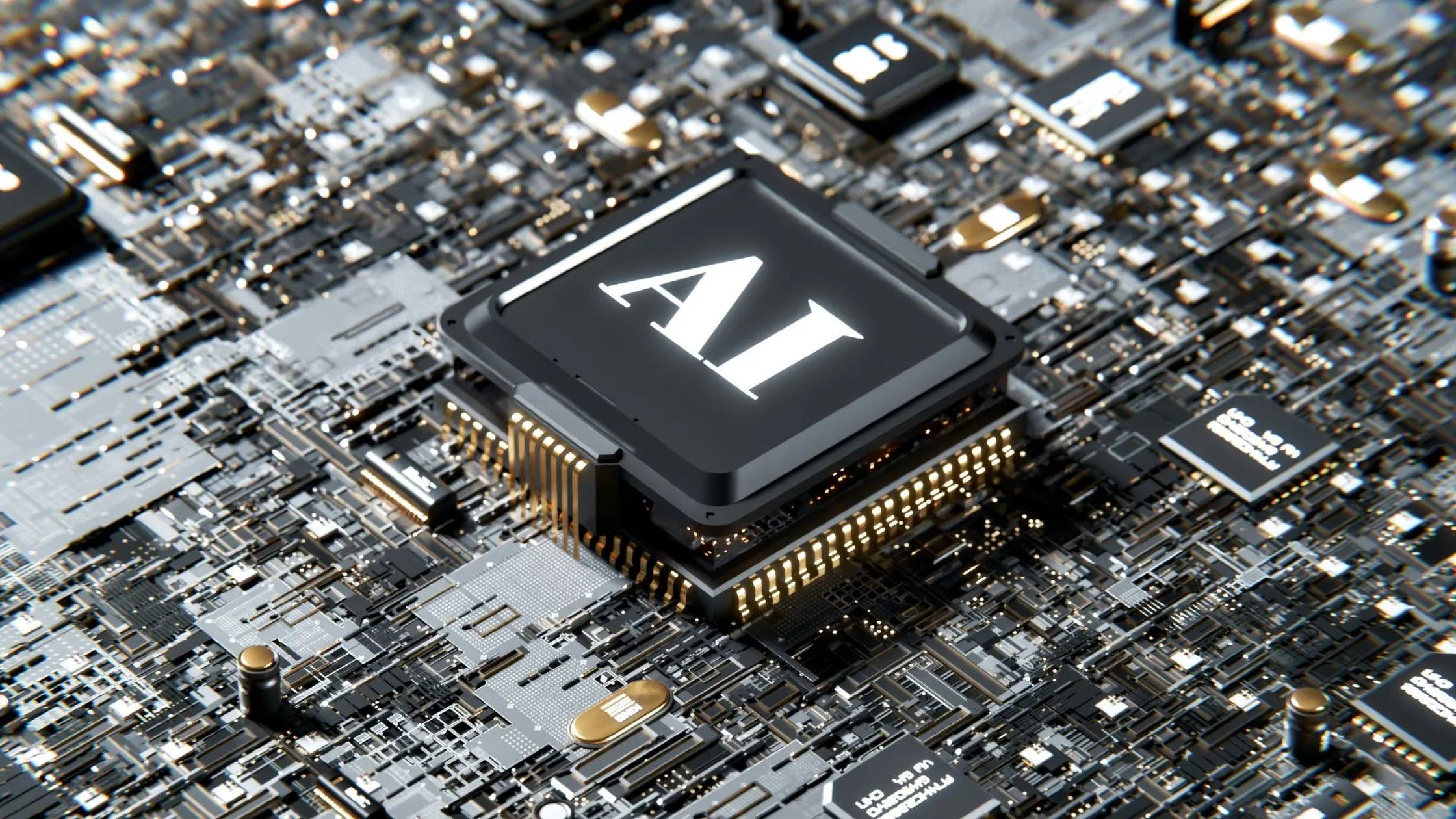
The recent Computex summit in Taipei highlighted a fierce competition between NVIDIA Corporation (NASDAQ:NVDA) and Advanced Micro Devices Inc (NASDAQ:AMD), two titans in the semiconductor industry, as they unveiled their latest innovations in AI chip technology. Nvidia’s CEO, Jensen Huang, emphasized the company’s $2.8 trillion dominance in AI accelerators that are pivotal for services like ChatGPT, developed by OpenAI and supported by Microsoft Corporation (NASDAQ:MSFT). Huang introduced an upcoming chip called Rubin, set for 2026, intended to follow the successful Blackwell series and ensure Nvidia’s continued leadership in the AI space. Simultaneously, AMD’s CEO Lisa Su demonstrated a collaborative approach to AI innovation, emphasizing partnerships and integration with key industry players, including Microsoft. Her presentation underscored AMD’s commitment to advancing AI technology across various platforms, from consumer devices to data centers. Meanwhile, Microsoft Corp., along with its hardware partners, recently unveiled new laptops featuring AI enhancements branded as Copilot+.

Here are some key takeaways from some of the latest development on the AI space:
1. Nvidia’s Strategic Positioning
Nvidia continues to assert its dominance in the AI sector, with Huang unveiling the Rubin AI platform slated for 2026, following up on their successful Blackwell family of chips. The company’s focus on proprietary systems for AI development underscores its strategy to control significant parts of the AI technology stack. Their approach to maintaining a closed ecosystem for AI development underscores a robust competitive strategy.
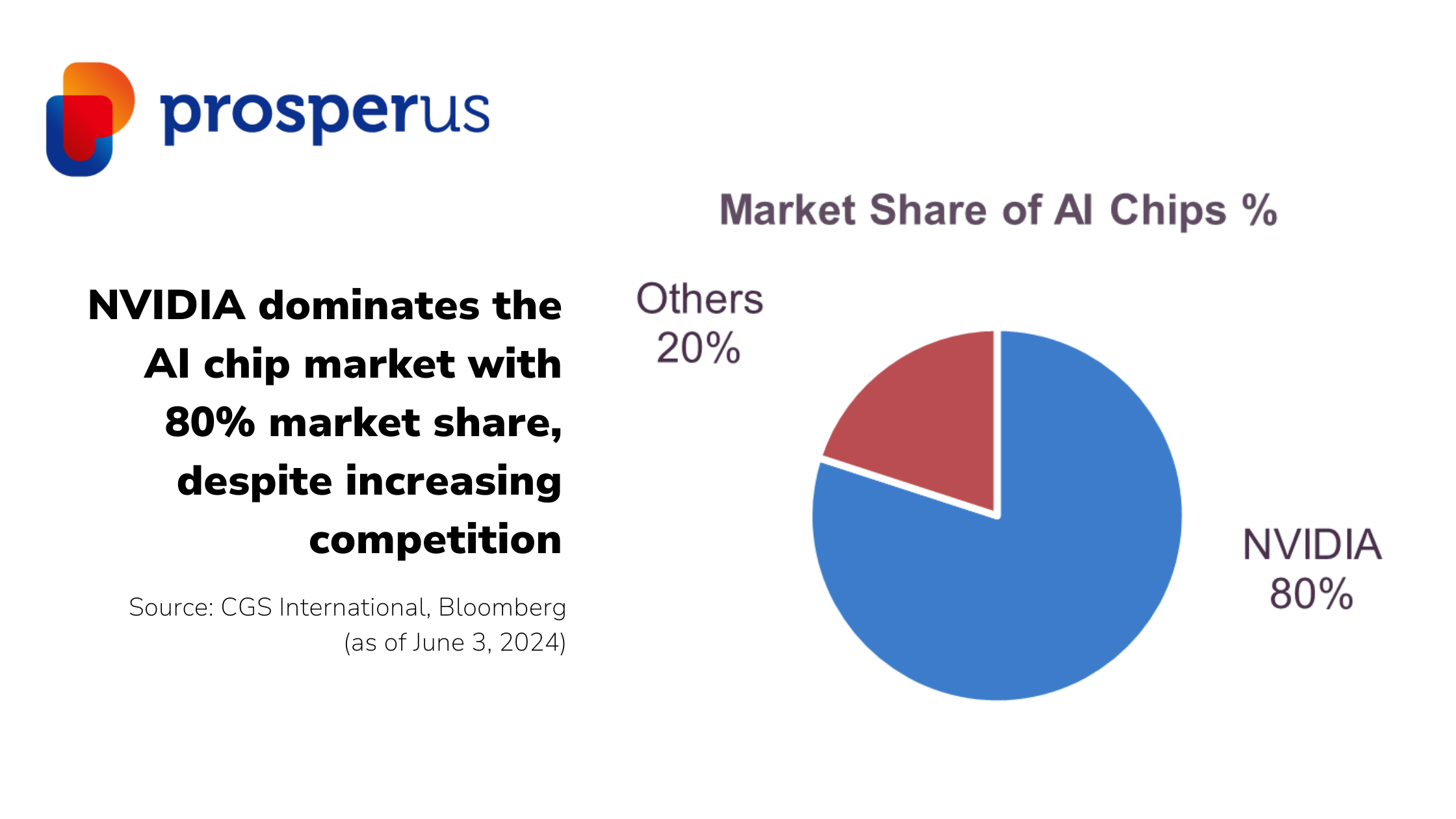
2. AMD’s Collaborative Approach
Contrasting sharply with Nvidia, AMD, under Lisa Su’s leadership, is emphasizing partnerships and open standards. The introduction of new laptops with AI enhancements (branded as Microsoft Copilot+) and the promise of new AI chips indicate AMD’s strategy to integrate more deeply with other tech ecosystems and focus on consumer and data center markets.
3. Microsoft and Qualcomm’s Entry into AI Hardware
Microsoft has leveraged Computex to promote its Copilot+ initiative, introducing laptops with new AI capabilities that promise longer battery life, thanks to processors provided by Qualcomm—a direct competitor to Nvidia. This move signifies a broader embrace of AI across various hardware platforms, potentially reshaping competitive dynamics in the tech industry.
Investment Actions
1. Consider Long-Term Holdings in Nvidia
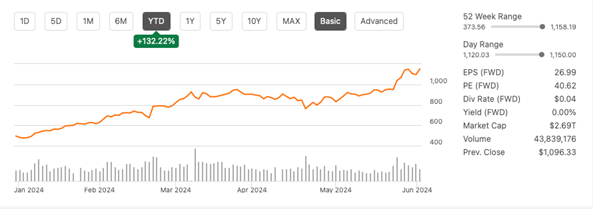
Source: SeekingAlpha, CGS International (as of June 3, 2024)
Nvidia’s consistent innovation and market dominance, particularly in AI accelerators that power generative AI platforms like OpenAI’s ChatGPT, position it as a prime candidate for long-term investment. Their continued expansion into new AI technologies is expected to solidify their market reach and influence.
2. Diversify with AMD Investments
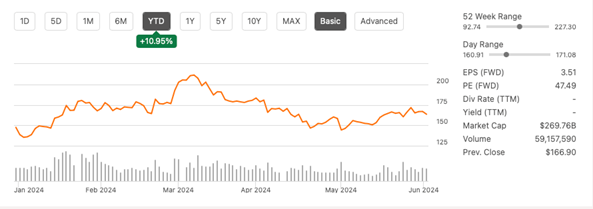
Source: SeekingAlpha, CGS International (as of June 3, 2024)
AMD’s strategic emphasis on open standards and extensive partnerships highlights its potential for growth. With AMD powering the new laptops enhanced by Microsoft’s Copilot+ and focusing on the consumer and data center markets, investors might find AMD a compelling component of a diversified tech portfolio.
3. Explore Opportunities in Microsoft
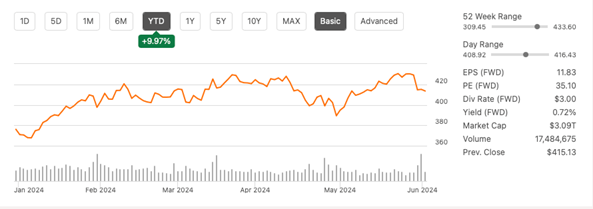
Source: SeekingAlpha, CGS International (as of June 3, 2024)
Microsoft’s involvement in the development of Copilot+ and its significant investment in OpenAI position it as a central player in the AI landscape. Its collaboration with AMD and ongoing enhancements to Windows for AI applications suggest robust growth prospects in AI integration across various platforms.
Key Risks
1. Market Volatility
The AI sector is known for its high volatility, driven by rapid technological changes and fierce competition. This environment can lead to significant fluctuations in the stock prices of Nvidia, AMD, and Microsoft.
2. Regulatory Challenges
As tech companies grow in influence, global regulatory scrutiny increases. Regulations specifically targeting AI technologies could impact the operations and profitability of these companies, affecting investor returns.
3. Execution Risk
The successful rollout of new technologies and platforms presents substantial execution risks. Nvidia’s proprietary systems, AMD’s partnership-based approach, and Microsoft’s integration efforts must navigate these challenges to realize their ambitious AI strategies.
Call-to-Action Conclusion
For investors, the unfolding dynamics at the intersection of Nvidia, AMD, and Microsoft offer a strategic vista into the AI revolution. Staying informed on these companies’ technological advancements and market strategies is crucial. Investors should consider these insights while consulting with financial advisors to refine their investment strategies in the AI space, maximizing potential returns in this burgeoning sector.
Disclaimer: ProsperUs Head of Content & Investment Lead Billy Toh doesn’t own shares of the company mentioned.

Billy Toh
Billy is deeply committed to making investment accessible and understandable to everyone, a principle that drives his engagement with the capital markets and his long-term investment strategies. He is currently the Head of Content & Investment Lead for Prosperus and a SGX Academy Trainer. His extensive experience spans roles as an economist at RHB Investment Bank, focusing on the Thailand and Philippines markets, and as a financial journalist at The Edge Malaysia. Additionally, his background includes valuable time spent in an asset management firm. Outside of finance, Billy enjoys meaningful conversations over coffee, keeps fit as a fitness enthusiast, and has a keen interest in technology.







